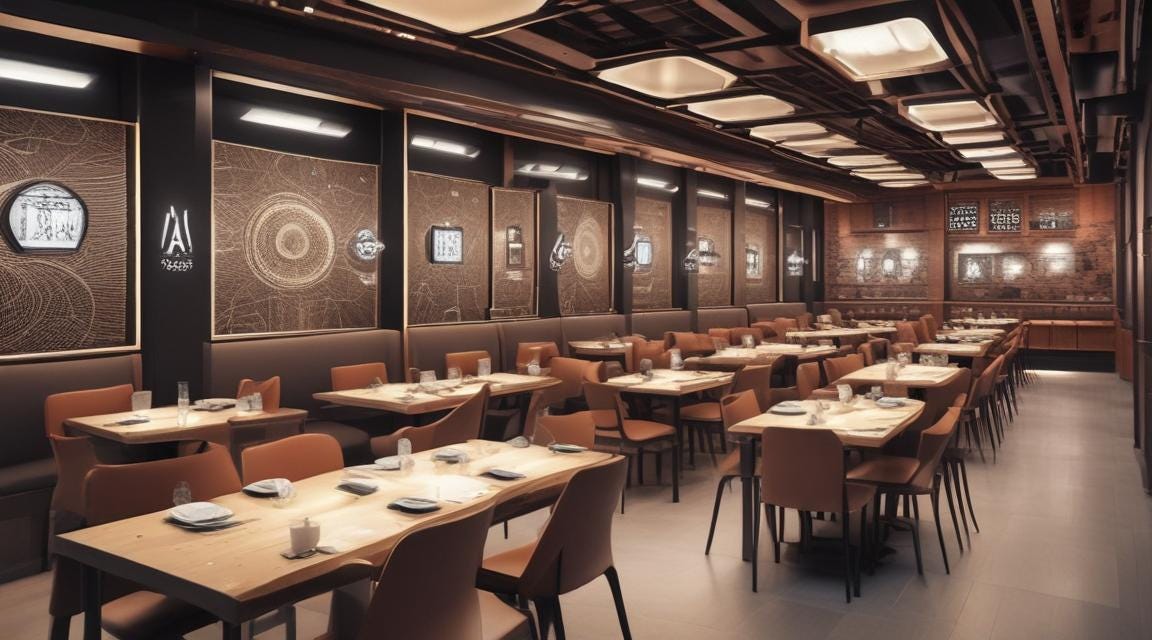AI hallucinations are bad for restaurants
More recommended reading featuring ChatGPT's alarming overconfidence
Well this is troubling.
A few hours before I sent Tuesday’s Expedite about phone-answering artificial intelligence at my local restaurant, I received the most recent edition of The LO Times by New York City restaurant critic Ryan Sutton, titled, Don’t Ask ChatGPT for Restaurant Advice! (Solid headline.)
It’s a well-timed and alarming restaurant-centric analysis of some of the newest technology that’s about to show up inside a whole lot of iPhones. Apple will integrate a version of ChatGPT, the generative AI platform, into its newest phones later this year.
The post highlights some significant flaws as the generative AI bot opines about particular restaurants in the city, sharing questionable and sometimes outright false information seemingly presented as fact. It seems to be pulling attributes from thin air, rarely integrating any existing critical analysis. Instead, the bot prefers to pen tidy recommendations in the style — but not substance — of the sort of restaurant suggestion you’d get from a friend.
Sutton writes:
Indeed, you start to realize what’s going on when you remember that ChatGPT isn’t a journalist, nor is journalism ever the mission of Big Tech. This bot isn’t really the smart friend you should trust — a reality that becomes all the more clear when it admits, like it did to me, that it sometimes just makes up stuff about restaurants.
Obviously this was going to happen. Earlier this summer, New York Times then-critic Pete Wells cited a study that found people couldn’t tell the difference between real and bot-generated Yelp reviews. Worse, they were more likely to believe the fake ones were real. Oof.
related coverage:
AI is knocking. Are you listening yet?
On this day, mid-2024, no one needs me to highlight the rampant pace of nefarious disinformation on the internet, something that seems to be increasing amid hi…
The fact that generative AI lies — or hallucinates, in AI vernacular — is accepted among experts. Sometimes it’s even celebrated.
“Hallucination is usually framed as a technical problem with AI—one that hardworking developers will eventually solve. But many machine-learning experts don’t view hallucination as fixable,” journalist Lauren Leffer wrote in Scientific American in April.
Instead, Leffer writes, researchers believe that, “To mitigate hallucinations … generative AI tools must be paired with fact-checking systems that leave no chatbot unsupervised.”
Huh. I don’t see it happening. (It certainly didn’t when Sutton challenged ChatGPT on its knowledge of restaurants in New York City.)
At the time of Leffer’s piece six months ago, the lowest tracked hallucination rates among AI models were about 3 to 5 percent, as ranked by AI platform Vectara. Today, it’s around 1.5 percent, per the same leaderboard.
In January, lauded technology journalist and Wired contributor Steven Levy encouraged us to embrace the lies, writing, “Right now, their inaccuracies are providing humanity with some breathing room in the transition to coexistence with superintelligent AI entities.”
In other words, don’t worry, our opinions informed by lived experiences are still relevant. (For now.)
What else?
Chef José Andrés is launching a hotel brand. Bazaar House by José Andrés is coming to Washington, D.C.’s Georgetown neighborhood in 2026. I covered the news — and spoke to José Andrés Group CEO Sam Bakhshandehpour — for Fast Company.
Restaurants embrace the low-budget TikTok ad. “It’s less prime time commercial and more high school group project.” — New York Times
Chipotle is still excited about tech, even though its CEO left. Jack Hartung, who in July announced plans to retire as the company’s chief financial officer, is instead staying on as the company’s president and chief strategy officer. He appeared on CNBC’s Mad Money this week, touting Chipotle’s investment in technology that helps its workers. But, he said, “The thing we’re not going to do is remove that personalization. There’s still going to be that eye to eye contact, we’re still going to serve you in the line.” — Mad Money
While chains compete fiercely on value, Shake Shack is leaning into its premium offering. The New York City-based chain debuted a new ad campaign, convincing people the brand’s prices are “worth it.” — Marketing Dive







